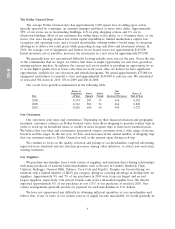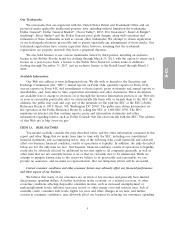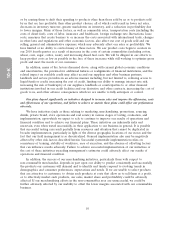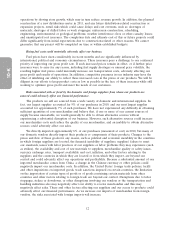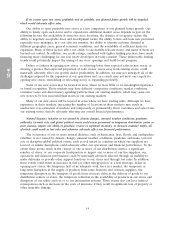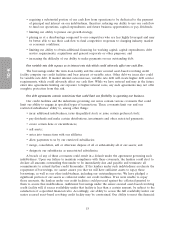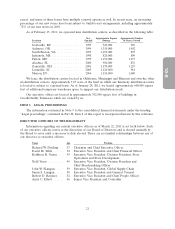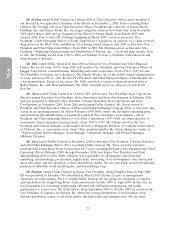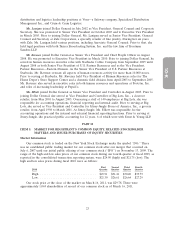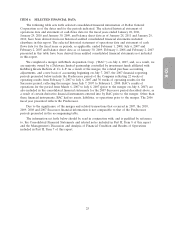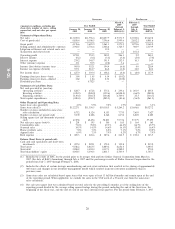Dollar General 2010 Annual Report Download - page 94
Download and view the complete annual report
Please find page 94 of the 2010 Dollar General annual report below. You can navigate through the pages in the report by either clicking on the pages listed below, or by using the keyword search tool below to find specific information within the annual report.
10-K
Our cash flows from operations may be negatively affected if we are not successful in managing our
inventory balances.
Our inventory balance represented approximately 45% of our total assets exclusive of goodwill and
other intangible assets as of January 28, 2011. Efficient inventory management is a key component of
our business success and profitability. To be successful, we must maintain sufficient inventory levels to
meet our customers’ demands without allowing those levels to increase to such an extent that the costs
to store and hold the goods unduly impacts our financial results. If our buying decisions do not
accurately predict customer trends or purchasing actions, we may have to take unanticipated
markdowns to dispose of the excess inventory, which also can adversely impact our financial results. We
continue to focus on ways to reduce these risks, but we cannot assure you that we will be successful in
our inventory management. If we are not successful in managing our inventory balances, our cash flows
from operations may be negatively affected.
Because our business is seasonal to a certain extent, with the highest volume of net sales during the
fourth quarter, adverse events during the fourth quarter could materially affect our financial statements as a
whole.
We generally recognize our highest volume of net sales during the Christmas selling season, which
occurs in the fourth quarter of our fiscal year. In anticipation of this holiday, we purchase substantial
amounts of seasonal inventory and hire many temporary employees. An excess of seasonal merchandise
inventory could result if our net sales during the Christmas selling season were to fall below either
seasonal norms or expectations. If our fourth quarter sales results were substantially below expectations,
our financial performance and operating results could be adversely affected by unanticipated
markdowns, especially in seasonal merchandise. Lower than anticipated sales in the Christmas selling
season would also negatively affect our ability to absorb the increased seasonal labor costs.
Our current insurance program may expose us to unexpected costs and negatively affect our financial
performance.
Our insurance coverage reflects deductibles, self-insured retentions, limits of liability and similar
provisions that we believe are prudent based on the dispersion of our operations. However, there are
types of losses we may incur but against which we cannot be insured or which we believe are not
economically reasonable to insure, such as losses due to acts of war, employee and certain other crime
and some natural disasters. If we incur these losses and they are material, our business could suffer.
Certain material events may result in sizable losses for the insurance industry and adversely impact the
availability of adequate insurance coverage or result in excessive premium increases. To offset negative
insurance market trends, we may elect to self-insure, accept higher deductibles or reduce the amount of
coverage in response to these market changes. In addition, we self-insure a significant portion of
expected losses under our workers’ compensation, automobile liability, general liability and group
health insurance programs. Unanticipated changes in any applicable actuarial assumptions and
management estimates underlying our recorded liabilities for these losses, including expected increases
in medical and indemnity costs, could result in materially different expenses than expected under these
programs, which could have a material adverse effect on our financial condition and results of
operations. In addition, we are evaluating the potential future impact of recently enacted
comprehensive healthcare reform legislation, which may cause our healthcare costs to increase.
Although we continue to maintain property insurance for catastrophic events at our store support
center and distribution centers, we are effectively self-insured for other property losses. If we
experience a greater number of these losses than we anticipate, our financial performance could be
adversely affected.
16


